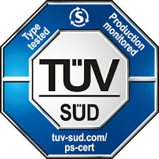|
Terms |
Definition |
|
Rate/working current |
Current rating is the normal operating current of the fuse. The maximum continuous operating current of the circuit and the influence of the ambient temperature (Normally is 25 C) are important considerations when specifying the current rate. |
|
Maximum current |
It is related to the inrush current for various circuits, when we select a correct fuse, we need to consider this and choose “fast-acting” or “Time delay”product. |
|
Voltage |
The rated voltage is the maximum voltage at which a safe fault current interrupt occurs. The maximum effective operating voltage of the circuit is an important consideration when specifying the rated voltage. Also, consider AC or DC circuits. Higher voltages can be used in lower voltage circuits, but not vice versa. |
|
I.R. or Breaking Capacity |
The rated breaking capacity or interrupt rating is the short-circuit current at which the fuse can blow (at the rated voltage) without destruction or the maintenance or arcing or damage the fuse case. The maximum possible fault current is an important consideration when specifying a rated breaking capacity. |
|
Size or Type |
Depends on the requirements, normally it has SMD, Cartridge, radial leaded or various size in high voltage fuses. |
|
Short circuit |
Over 500% to 700% of rated – current applies to the fuse. |
|
Overloading |
Over 100% rated-current apply to the fuse. |
|
Inrush current |
Inrush current, input surge current, or switch-on surge is the maximal instantaneous input current drawn by an electrical device when first turned on. |
|
TC curve |
Time – Current Curve. The fuse curves represent the cutoff value of the prospective available short-circuits current under the given circuit. |
| UL Approval |  |
Approval from Underwriters Laboratories (UL) indicates that the fuse is manufactured in full compliance with the UL 248-14 standard. UL Recognition, c-UL Listing, c-UL Recognition, c-UL-us Listing, and c-UL-us Recognition do not imply full compliance with UL-248-14. |
| CSA Certification |  |
Approval from the Canadian Standards Association (CSA) indicates that the fuse or fuse holder is manufactured in full compliance with CSA C22.2, No. 248.14 or CSA C22.2, No. 39. |
| BSI Approval |  |
British Standards Institute (BSI) approval indicates that the fuse is manufactured in full compliance with the appropriate section of IEC 60127 (BS 4265). |
| VDE Approval |  |
Approval from VDE, a German organization, indicates that the fuse or fuse holder is manufactured in full compliance with the appropriate section of the IEC 60127 standard. |
| SEMKO Approval |  |
Approval from SEMKO, a Swedish organization, indicates that a fuse or fuse holder is manufactured in full compliance with the appropriate section of the IEC 60127 standard. |
| CCC Certificate |  |
China Compulsory Certification (CCC), The CCC certificate was introduced in 2002 and applies to imported goods as well as to Chinese products. |
| PSE Approval |  |
The Electrical Appliance and Material Safety Law applies to enterprises that manufacture or import products in Japan |
| TUV Approval |  |
TÜV (Technischer Uberwachungsverein) is of German origin, translated as the Technical Inspection Association. TÜV is the leading and the most competent provider of product testing and certifications for the worldwide marketplace. The certification ensures compliance with domestic and international guidelines, standards and directives. |